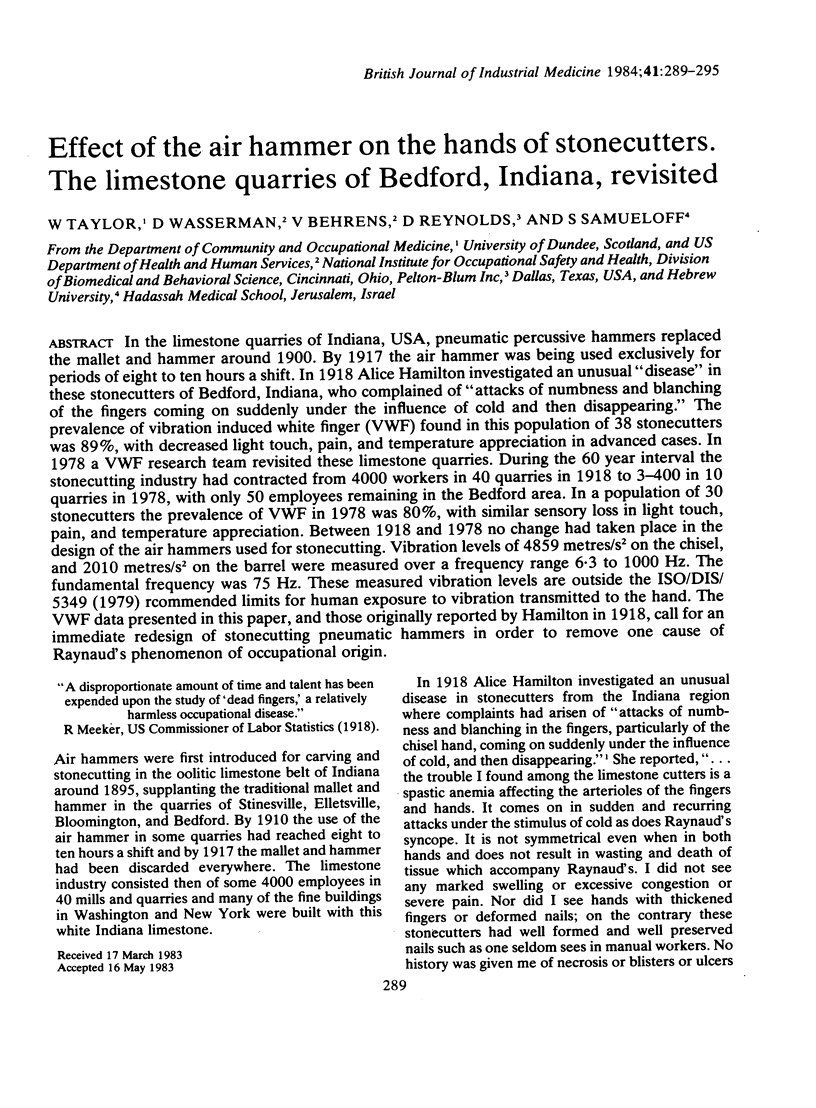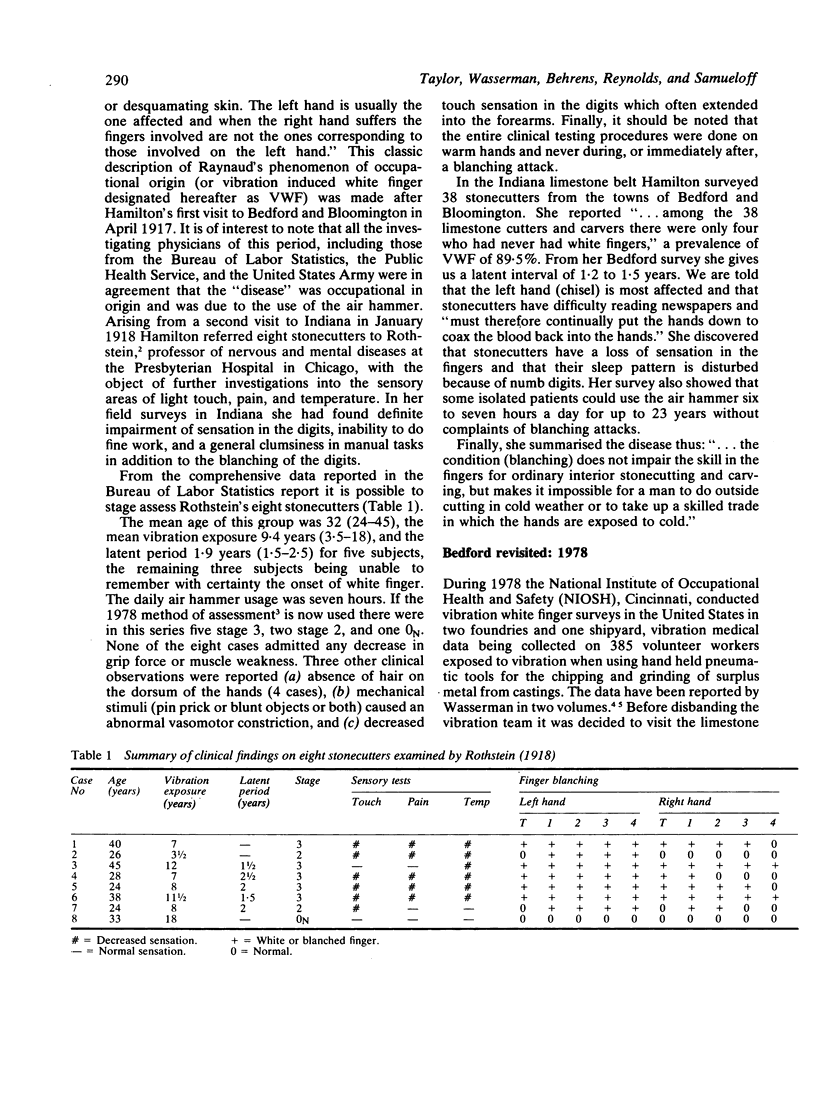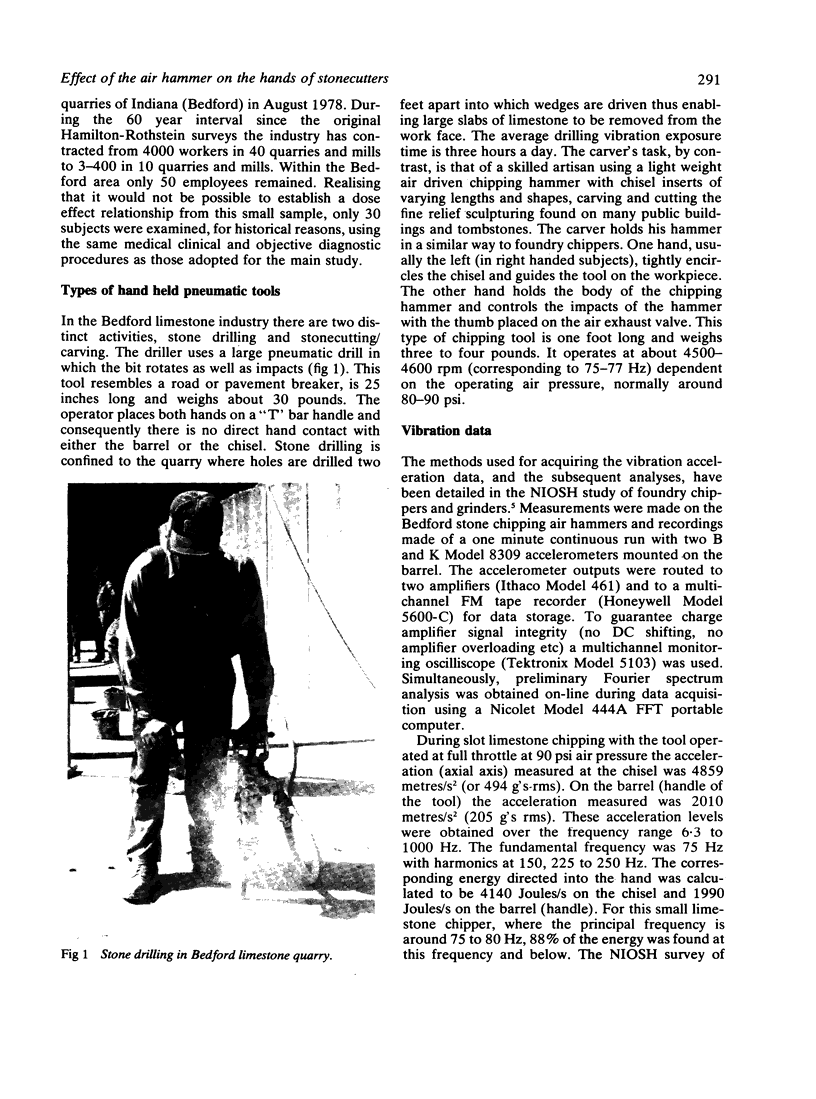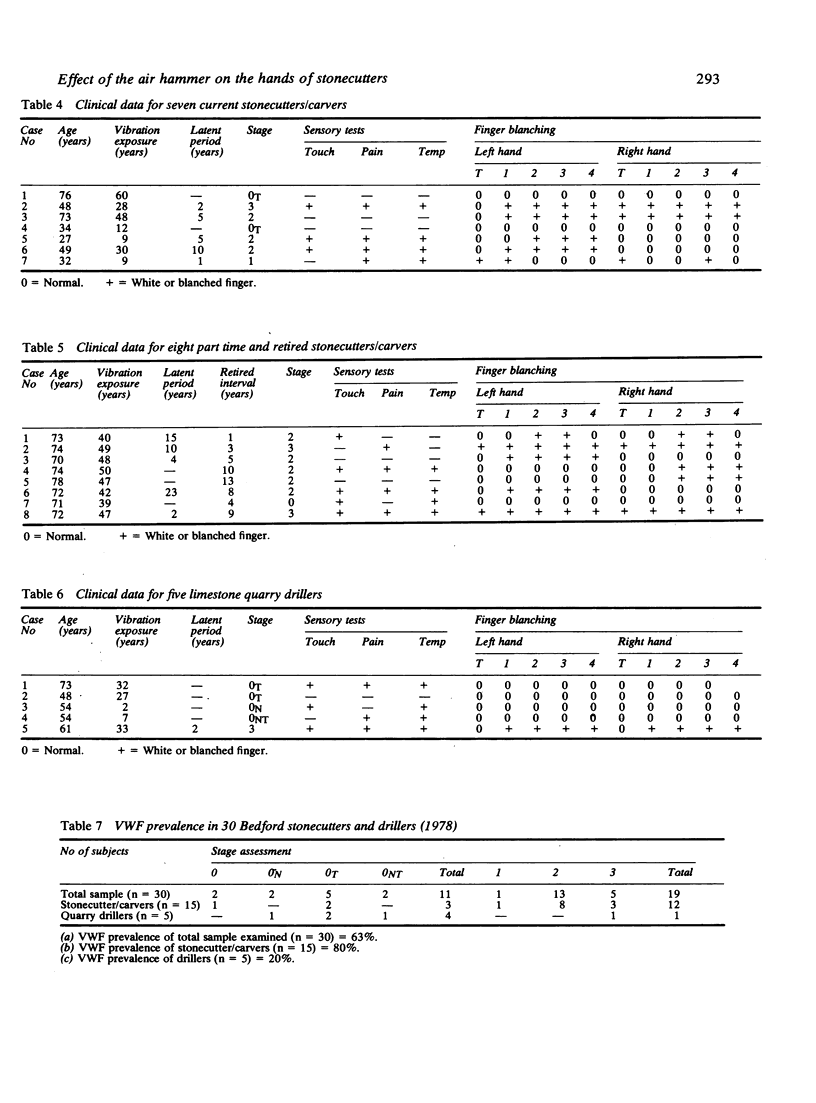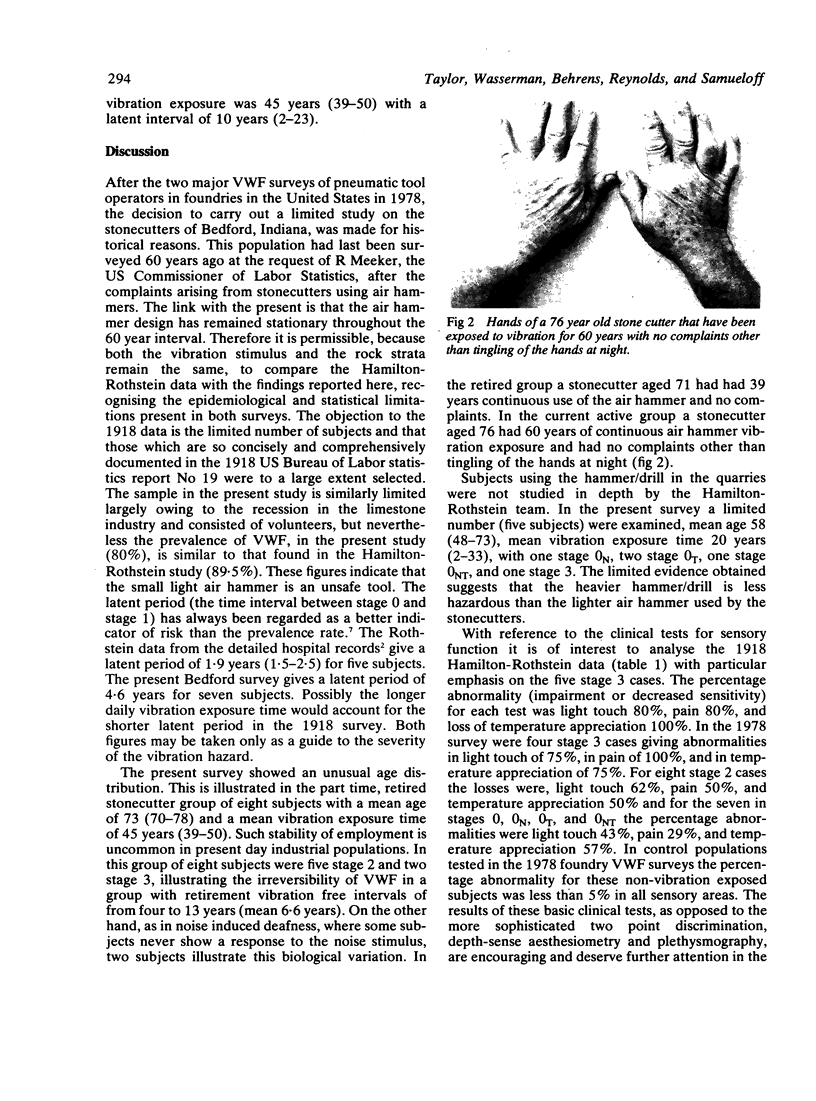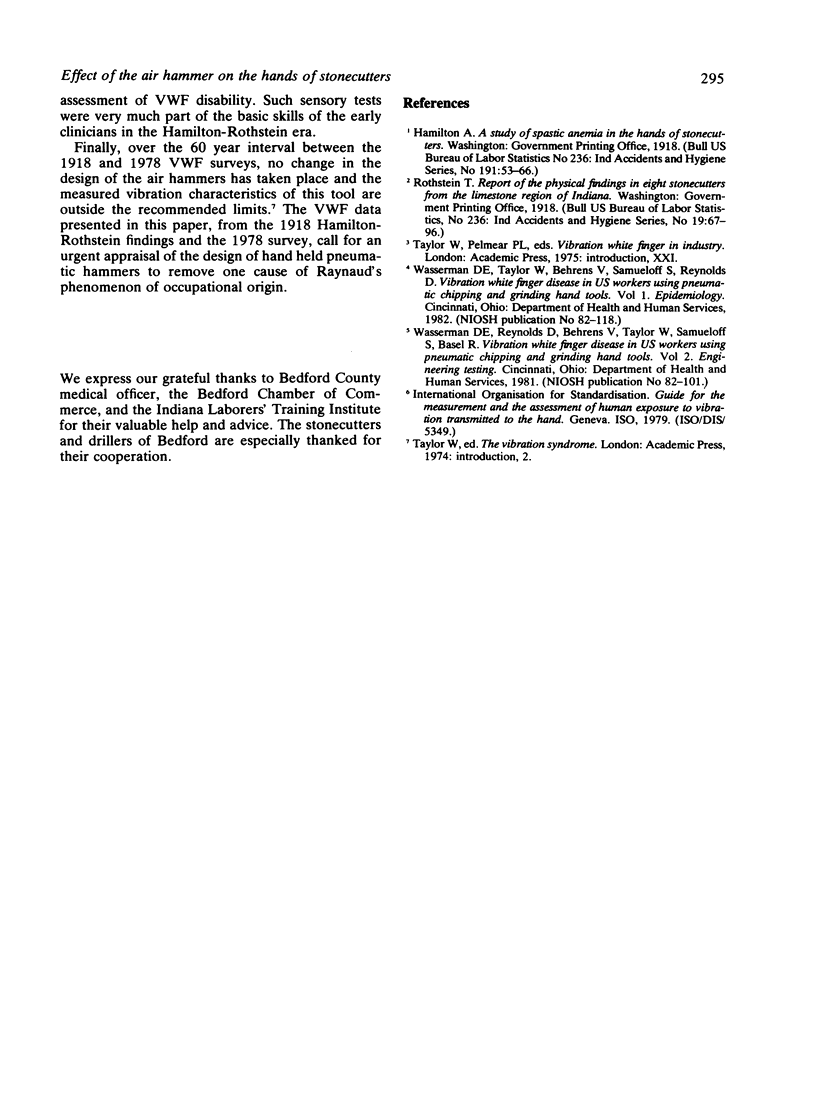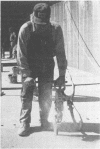Abstract
In the limestone quarries of Indiana, USA, pneumatic percussive hammers replaced the mallet and hammer around 1900. By 1917 the air hammer was being used exclusively for periods of eight to ten hours a shift. In 1918 Alice Hamilton investigated an unusual "disease" in these stonecutters of Bedford, Indiana, who complained of "attacks of numbness and blanching of the fingers coming on suddenly under the influence of cold and then disappearing." The prevalence of vibration induced white finger (VWF) found in this population of 38 stonecutters was 89%, with decreased light touch, pain, and temperature appreciation in advanced cases. In 1978 a VWF research team revisited these limestone quarries. During the 60 year interval the stonecutting industry had contracted from 4000 workers in 40 quarries in 1918 to 3-400 in 10 quarries in 1978, with only 50 employees remaining in the Bedford area. In a population of 30 stonecutters the prevalence of VWF in 1978 was 80%, with similar sensory loss in light touch, pain, and temperature appreciation. Between 1918 and 1978 no change had taken place in the design of the air hammers used for stonecutting. Vibration levels of 4859 metres/s2 on the chisel, and 2010 metres/s2 on the barrel were measured over a frequency range 6.3 to 1000 Hz. The fundamental frequency was 75 Hz. These measured vibration levels are outside the ISO/DIS/5349 (1979) recommended limits for human exposure to vibration transmitted to the hand. The VWF data presented in this paper, and those originally reported by Hamilton in 1918, call for an immediate redesign of stonecutting pneumatic hammers in order to remove one cause of Raynaud's phenomenon of occupational origin.
Full text
PDF